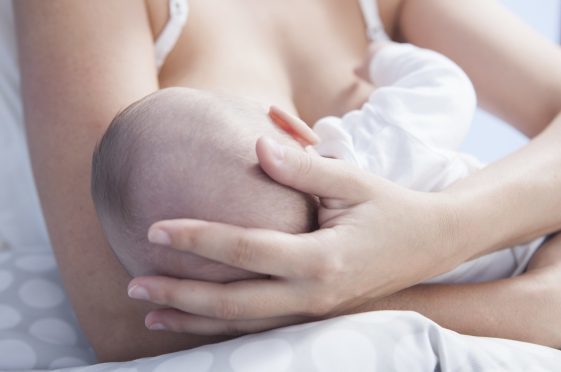New mothers should be paid for breastfeeding to help increase uptake, according to a “ground-breaking” Dundee University study.
More than 10,000 women across the UK were involved in the research, which offered shopping vouchers worth up to £120 if their babies received breast mik at two days, 10 days and six weeks old.
A further £80 of vouchers was available if their babies continued to receive breast milk up to six months.
The trial, conducted in partnership with Sheffield University, saw a six percentage points increase in the areas where the scheme was offered, compared with those areas where the scheme was not available.
Co-author of the study Mary Renfrew, Professor of Mother and Infant Health at Dundee University, said: “This is the first large-scale study to show an increase in breastfeeding in communities where rates have been low for generations, and where it can be particularly difficult for women to breastfeed without strong family and community support, because of strong societal barriers.
“In the UK these barriers include the difficulty some women encounter when breastfeeding in public, widespread misleading marketing that formula is equivalent to breastfeeding, a lack of high quality services to prevent and treat any problems if they arise, a lack of community support, a lack of education about breastfeeding for young children, and lack of support for women to breastfeed in the workplace.
“The incentive scheme was designed together with local women and staff to make sure it was feasible and appropriate, and breastfeeding support services were widely available in all the areas where the trial took place.
“Thanks to all the mothers and staff who supported this study, we now know much more about what might work to help new mothers to breastfeed.”
In Scotland, 63% of babies born in 2016/17 had been breastfed at some point and 41% were still breastfed at four to eight weeks old.
UK-wide, breastfeeding levels are some of the lowest in the world — in some areas just 12 per cent of six to eight week-old babies are breastfed.
Breastfeeding is said to have a wide range of benefits, helping to prevent short and long-term illnesses in children and in mothers and also reducing health costs to NHS.
It is estimated that the NHS would save a minimum of £17 million every year in hospital admissions and GP visits if more women could be supported in order to breastfeed for longer.
A Scottish Government spokesperson said they “remained committed” to supporting breastfeeding, but declined to specify whether they would adopt the incentive system as part of a policy.
The spokesperson explained: “We remain committed to supporting breastfeeding as it has many short and longer term health benefits for both mother and baby.
“However, the decision on how to feed their baby remains a choice entirely for new mums to make.
“This year we also announced an increase in resources to support mothers to breastfeed, particularly in the days immediately following birth.”










